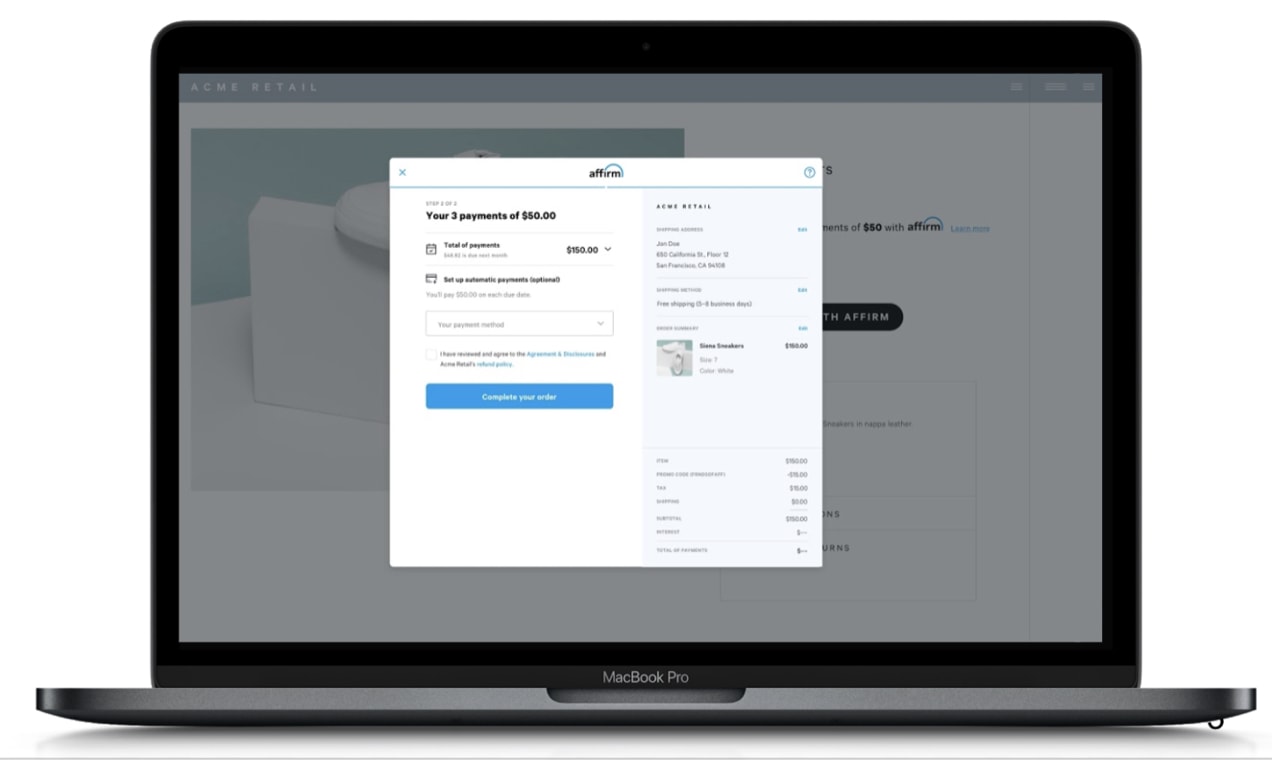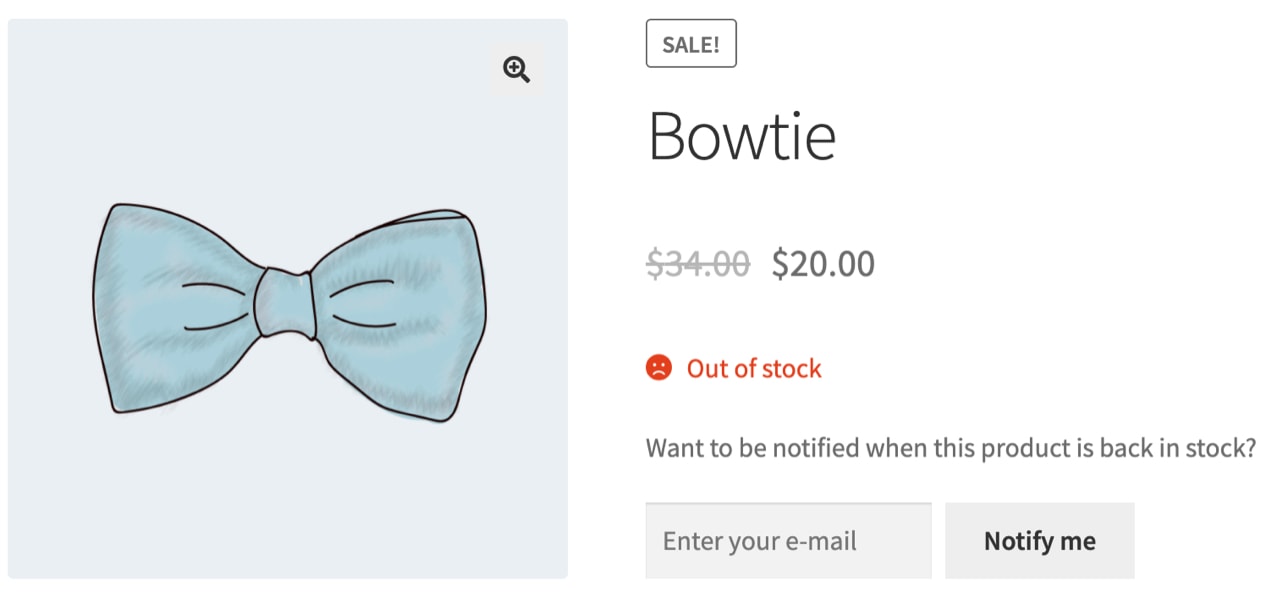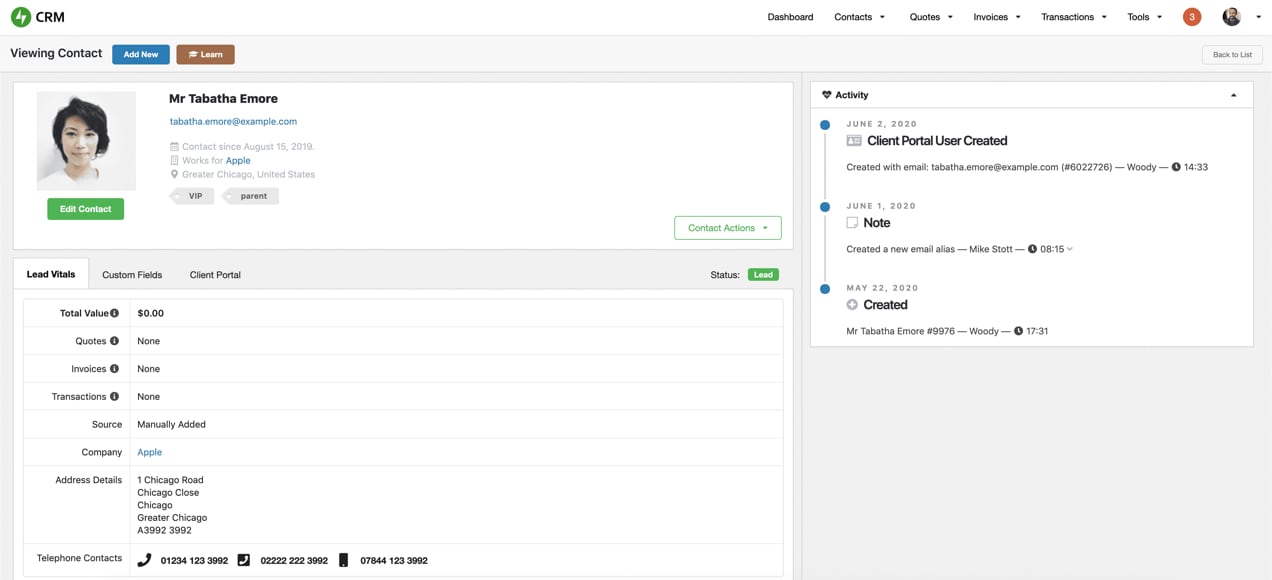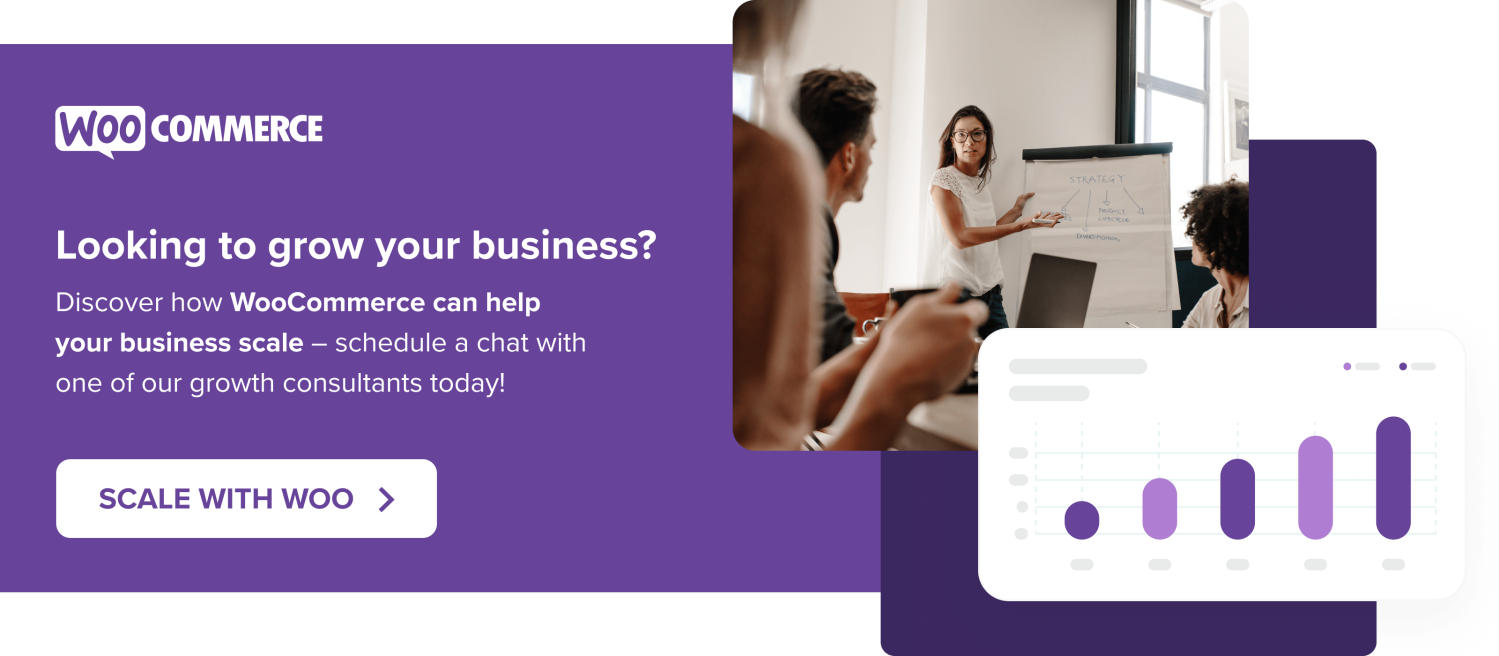A lot has changed in the world of ecommerce over the last few years. With so many more people shopping from home, which changes are temporary? Which ones will stick? What are the best products to sell online? And what emerging ecommerce trends are taking hold in 2025?
1. More payment options
↑ Back to topFirst, it was credit and debit cards. Then came tools like PayPal. But now, online consumers may want to pay using any number of methods. The more options you can offer to your customers, the more they will buy from your online store.
One emerging trend is digital wallets such as Venmo, which lets customers pay through the Venmo app, or using a QR code that’s unique to your business.
Another payment trend that’s soaring in popularity is Buy Now, Pay Later (BNPL) and similar offerings like Pay in Four. These let customers pay in installments for larger purchases, but without having to qualify for or waste time with credit checks and traditional financing. See six ways Buy Now, Pay Later can help grow your business.

Adding BNPL to your online store can be done best using services like Affirm or PayPal, which integrates with WooCommerce.
Lastly, even crypto may be a good option, as some ecommerce stores and other businesses are starting to accept it, and some customers are using it to pay.
The WooPayments extension lets you accept payments in over 135 currencies, from dozens of countries, and with express pay options like Apple Pay, Google Pay, and more.
2. Higher online ad costs
↑ Back to topOnline ad costs have skyrocketed, in part because of the huge growth of ecommerce, which has doubled its share of total retail spending from 10% to 20% in just five years. Will this trend stick around now that in-person shopping is making a comeback? It’s hard to say.
But Facebook ad costs rose 47% in the last year, which is why focusing on improving your customer retention strategies is even more important than ever. It costs much less to market to existing customers than to pursue new ones, so make the most of your existing audience.
3. Increasing review options for customers
↑ Back to topOnline reviews continue to gain importance as consumers want to be sure that they’ll be well-served by businesses that often have no storefront. Your online reputation is critical.
Using email marketing to ask your best customers to leave reviews should be a regular part of your marketing strategy. And be sure to include links to the various sites where they can leave reviews, including Google, Yelp, Trustpilot, or other more industry-specific sites that align with your products and services.
4. Ordering flexibility
↑ Back to topCustomers are looking for more choices and options when it comes to ordering online.
For instance, they may want to make one purchase, but ship their items to two different addresses. You want to be able to offer flexibility in the ordering process with options such as split orders, pre-orders, in-store pickup, and ‘clicks to bricks’ — a way to merge your online store with in-person selling.
If a product is unavailable, you should give customers the option to be notified when it’s back in stock. This is also a smart lead generation strategy because it gets them on your email list.

Lastly, pre-ordering is affected by shipping date estimates, so be accurate with these. And be sure to send email or text updates about the status of their order, especially if something causes your original estimated shipping date to change.
5. Chatbots for customer service
↑ Back to topMany ecommerce stores aren’t quite big enough to have full-time customer service staff. So what do you do when online shoppers have questions?
Chatbots are growing in popularity because they offer better service than FAQ pages and help forums. They also lead to increased revenue, because when questions get answered, consumers are more likely to buy. In 2019, chatbots were credited with helping bring in $2.8 billion globally, and this is increasing every year.
6. Less control over online targeting
↑ Back to topThe Apple iOS14 update to privacy and online tracking has made it much harder for ecommerce stores and other businesses using online advertising to efficiently and effectively target their ideal customers.
This has made online advertising more costly, in addition to being harder to track for campaign results.
In response, ecommerce businesses need to focus on owning their own media and building their in-house marketing lists.
Growing your email subscriber list is becoming one of your most important marketing strategies because you can advertise to your own list as often as you want. MailPoet and AutomateWoo both integrate seamlessly with WooCommerce and allow you to conduct effective email marketing.
If you’re shipping products to your customers, that means you also have a database of physical mailing lists, and you could increase your marketing through that channel as well.
This goes back to ecommerce trend #2 on this list about higher ad costs. By owning your own media, you have more control over your marketing and advertising costs. Email and direct mail both fall into this category when you’re using in-house mailing lists, and they’re great ways to retain customers and increase lifetime customer value.
7. Brand ambassadors
↑ Back to topSocial media influencers have become a viable new channel for marketing. When you find someone who has a large online following, and you think their followers align fairly well with the products in your online store, paying that person to become a brand ambassador can lead to big profits.
And this is easily trackable because you can give specific coupon codes, create customized landing pages, and incorporate other methods that will be unique to each brand ambassador, and perhaps even each campaign you create for them.
With so many social media channels and so many younger consumers spending time on them, this may be a smarter way to advertise on social media than simply paying for ads. But again — it depends heavily on finding an influencer whose audience aligns well with your products. That’s step one if you want to pursue this strategy.
8. Alternative financing
↑ Back to topeCommerce businesses are often overlooked by traditional lenders. And that’s okay because online stores have unique needs and alternative finance options have come about that perfectly understand what ecommerce stores need to be successful.
If your ecommerce store is ready for financing, there are a number of routes you can take, but revenue-based financing may be the ideal choice. This lets you pay back the loan as a proportion of your monthly or daily revenue, rather than as a fixed payment amount. So if your business grows fast, you’ll also pay the loan off faster because your payments will be higher. If you have a period of slow sales, your repayments will decrease, too.
This flexible approach appeals to ecommerce businesses because it lowers risk and helps them stay nimble as they grow.
9. Sustainable business practices
↑ Back to topEspecially among younger generations, environmental consciousness continues to grow, and these customers look for businesses that are attempting to do their part to mitigate their effect on the natural world.
A growing ecommerce trend is to focus on your packaging and shipping processes and materials, and to choose ones that have less of an impact on the environment. You may also be able to find more efficient methods within your manufacturing and fulfillment processes. This could relate to energy usage, water usage, waste products, supply chains, and much more.
Or you might be able to find more responsible ways to handle returns. Can you resell them? Donate them? Repurpose them somehow?
Whatever you’re able to do that works for your business and that also helps the environment, add a section about this on your About page, or create a whole new page on your site. You can also include a couple of sentences on your checkout page as one more incentive not to abandon the cart, such as “All our shipping materials are recyclable.”
10. Personalized marketing
↑ Back to topPersonalization requires data. And data requires a method for organizing it and accessing it in useful ways. This is the purpose of CRMs — customer relationship management tools — such as Jetpack CRM.
A CRM enables you to track customer purchases, invoices, engagement, conversions, and many other important metrics. It also lets you build customer profiles that you can later use to send out more personalized marketing.

When you can tailor your messaging to segments of customers who have similar interests or life experiences (like people with kids vs people without kids), you can be much more effective in speaking to the needs and desires of each one.
Personalization is a growing ecommerce trend because the technology to track data and leverage that data to enhance the customer experience is only getting better. And as mentioned earlier, this is your own data on your existing customers, which means you can use it however best fits your ecommerce content marketing and revenue goals.
A CRM will make your email marketing and other marketing efforts that much more effective once you start personalizing.
Learn from others or become your own trendsetter
↑ Back to topYou don’t need to pursue every trend, but keeping tabs on the changing ecommerce environment will help you take advantage of the right opportunities. If you’re always seeking ways to better serve customers and improve your operations, you may just discover your own trend!
Which trends on our list might be best for your store? Did we miss any? Let us know!
About




Great POST and tips! Will be usefull
Thanks, Felipe! Glad it was helpful!